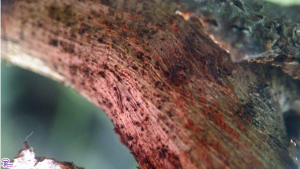Across the globe, Amanita muscaria (the “Fly Agaric”) is the go-to mushroom for connecting humans with the divine. I will forego describing this mushroom, since I have already done that in FFF#069. Fortunately, you are familiar with this toadstool. It is the mushroom with a red cap covered in white dots, with white gills underneath, and supported by a white stipe. Probably about 90% of mushroom art is based on this mushroom, so you have definitely seen it around (for example: in Mario games, Disney’s Fantasia, lawn decorations, and Christmas ornaments). Aside from the visual aesthetic the mushroom provides in your daily life, muscaria has had a deep and lasting impact on a variety of cultures around the world, from Hinduism to Siberian shamans to Santa Claus.







![#011: Characteristics of Kingdom Fungi [Archived]](https://www.fungusfactfriday.com/wp-content/themes/hueman/assets/front/img/thumb-small-empty.png)

